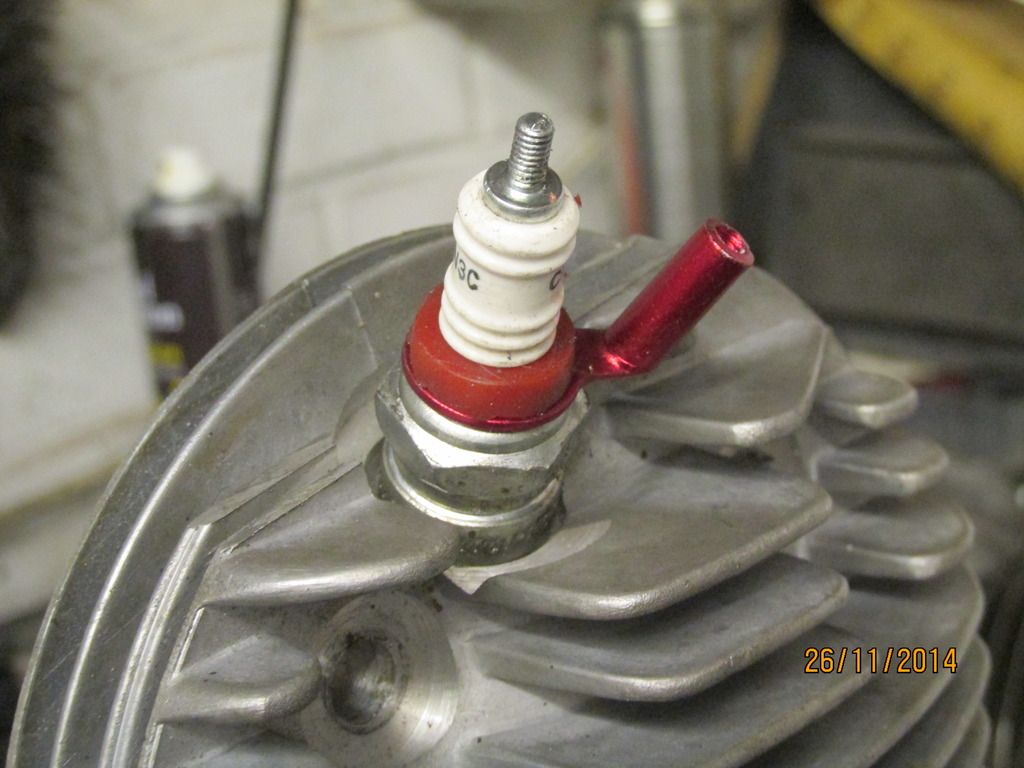Page 1 of 1
SIP heat sensor

Posted:
Sun Jul 19, 2015 11:35 amby Tractorman
Anyone know the thread size the SIP speedo heat sensor is, please? It's between 4 and 5mm.
Re: SIP heat sensor

Posted:
Sun Jul 19, 2015 1:02 pmby Nelly
I think it is 4.5mm.
Ben at Rayspeeds tapped a thread into my cylinder head for my sensor, so if nobody else can clarify the size, give him a shout to ask.
Re: SIP heat sensor

Posted:
Sun Jul 19, 2015 10:56 pmby Mal*1
It's definately 4.5. Just had mine done recently....

Re: SIP heat sensor

Posted:
Mon Jul 20, 2015 5:04 pmby Nelly
Just for info, here's where my sensor is fitted

Re: SIP heat sensor

Posted:
Mon Jul 20, 2015 6:45 pmby Tractorman
Put mine, or will when I get the tap, on the other side but more or less in the same place.
Re: SIP heat sensor

Posted:
Wed Jul 22, 2015 10:30 pmby Train driver
I had my engine built by mike davis of mesmoto.co.uk and he fitted it to my cylinder, but the barrel and head was the work of darrell taylor who said I would get a better heat reading if the sensor was under the plug.
Re: SIP heat sensor

Posted:
Thu Jul 23, 2015 12:15 amby Toddy
Train driver wrote:I had my engine built by mike davis of mesmoto.co.uk and he fitted it to my cylinder, but the barrel and head was the work of darrell taylor who said I would get a better heat reading if the sensor was under the plug.
+1
Re: SIP heat sensor

Posted:
Thu Jul 23, 2015 5:32 pmby dscscotty
Or on top of it!
Re: SIP heat sensor

Posted:
Thu Jul 23, 2015 6:21 pmby amb
Scotty , by any chance could you put any images up of the sensor you put on the top of the plug , iknow it was in jetset but thats long gone

Re: SIP heat sensor

Posted:
Sat Jul 25, 2015 1:18 amby Warrick
Interesting I'm trying to work out where my temperture should be. I'm running a sip sensors on top of the plug on an Avanti and seem to get readings between 145 and 180F... It would be great to know other peoples temperatures running this set up on TOP of plug in F
Re: SIP heat sensor

Posted:
Sat Jul 25, 2015 4:52 pmby Tractorman
Still running in but depending on ambient temp I get 50-56c under the plug cap. Next time I take the head cowl off I will fit the sensor into the head.
Re: SIP heat sensor

Posted:
Sat Jul 25, 2015 7:10 pmby dscscotty
This has been my preferred method of attaching sensors, long before the advent of more recent technical gadgets we used this method, which give good readings via the plug. Having fitted both beneath the plug and on top there is very little if any difference in the temp readings it also picks up change in temp very quickly. I have encountered issues with sensors fitted under the plug such as the rings splitting and causing air leaks, your not guaranteed a good seal imo.
Here's a pic as requested:

Re: SIP heat sensor

Posted:
Sat Jul 25, 2015 7:44 pmby gp200ts1
What pipe do you use to hold it as everything I have tried is either too big or too tight to fit over the plug?
Re: SIP heat sensor

Posted:
Sun Jul 26, 2015 9:08 amby Tractorman
If you take a plug, not that they will have plenty anyway, to a motorcycle shop you will find some petrol pipe that fits well. dscscotty you're right about it picking up temp changes quickly.
Re: SIP heat sensor

Posted:
Sun Jul 26, 2015 11:47 amby Warrick
I went to halsfords got given some 8mm fuel pipe.. It's a pig to get on the 1st time just pop it in boiling water and use a screwdriver to get it on.. Once it been on there a while it's easy to get on and off. Better to be tight fit. If it's lose it can read 10-20f less than it should. I've just replaced my 1st attempt it was getting lose coming on and off. Cut mine abit slimmer than the picture so the cap fitted well.
The fun starts when you try and find out what a healthy temperture is. There would seem to be a lot of difference in readings people get. I think this is down to how well it's fitted and the kit.
I think between 130 to 180f on top of the plug seems about right pending on the kit. Eden gets 347f under the plug
Good luck they work well
Warrick
Re: SIP heat sensor

Posted:
Sun Jul 26, 2015 1:43 pmby Tractorman
Be interesting to know what temps engines seize at but I suppose that would depended on piston clearance.
Re: SIP heat sensor

Posted:
Wed Dec 21, 2016 12:57 amby Fast n Furious
On a warmed up engine, if the temp reading continues to rise immediately after you have switched the ignition off, then you should assume that the sensor is not located in the best place.
Re: SIP heat sensor

Posted:
Thu Dec 29, 2016 7:54 pmby Solid Air
Mal*1 wrote:It's definately 4.5. Just had mine done recently....

What is the thread pitch please? Need to get one to fit my sensor.
Cheers, Mark
